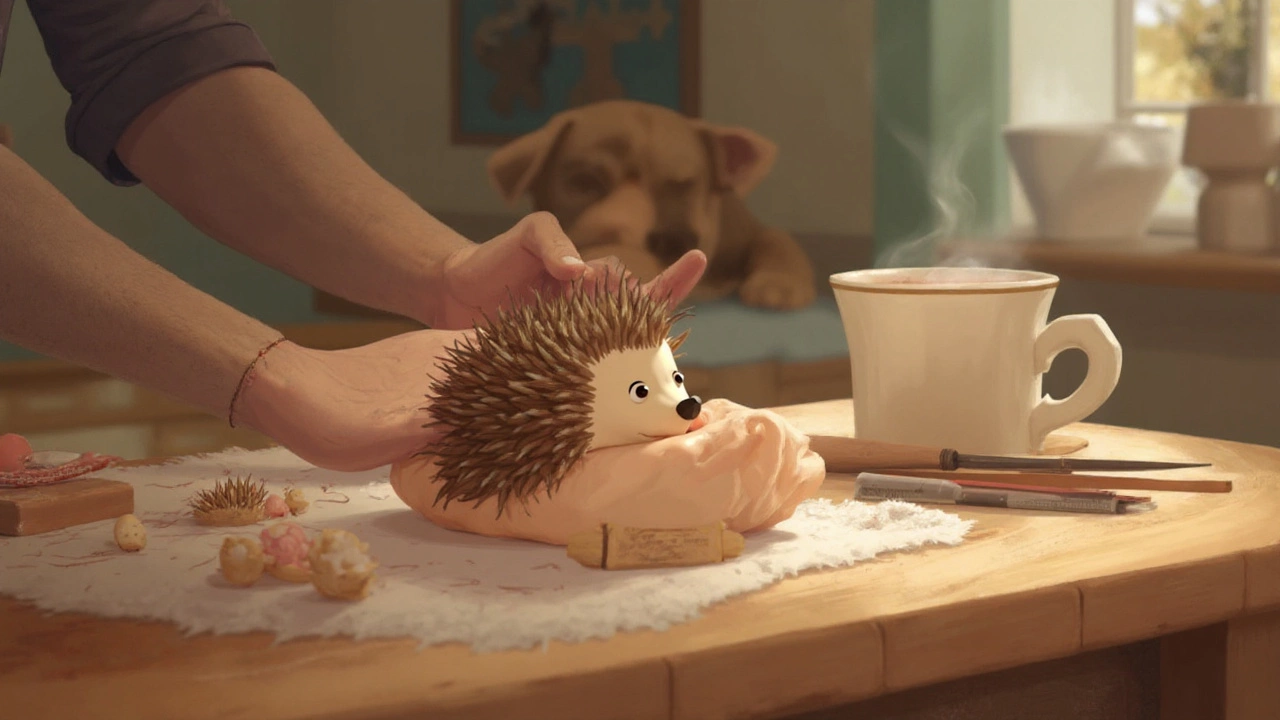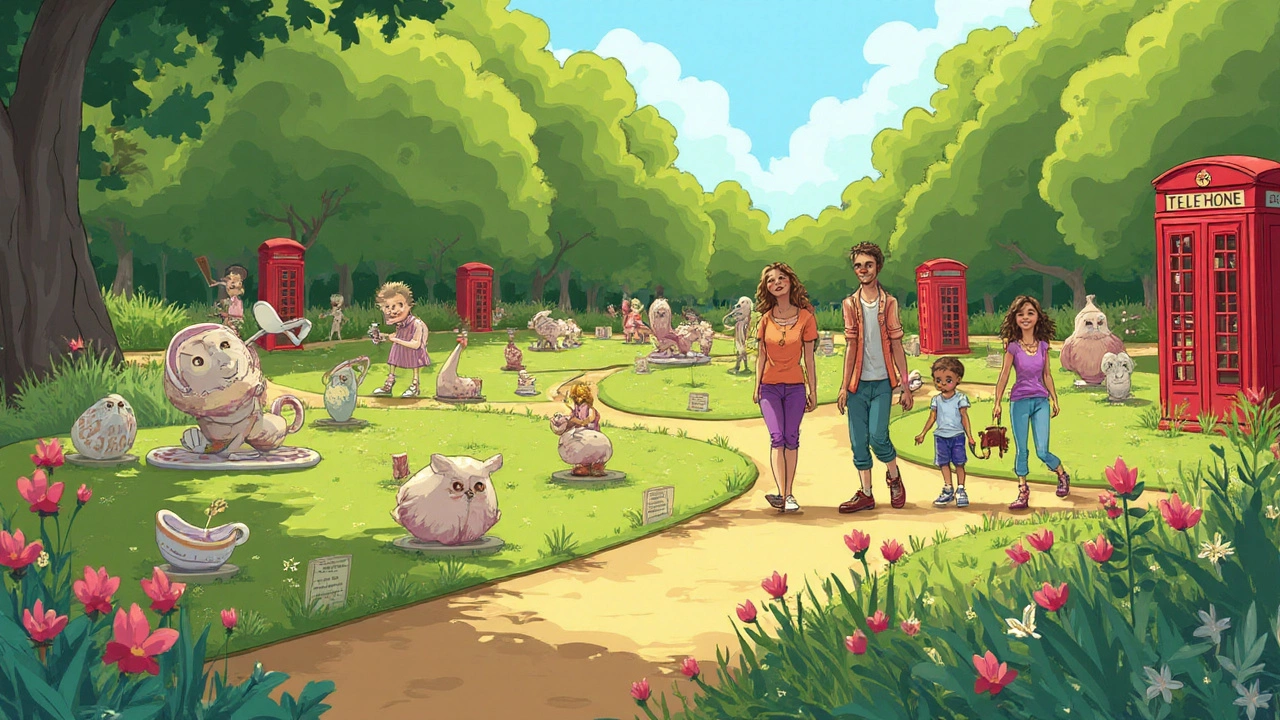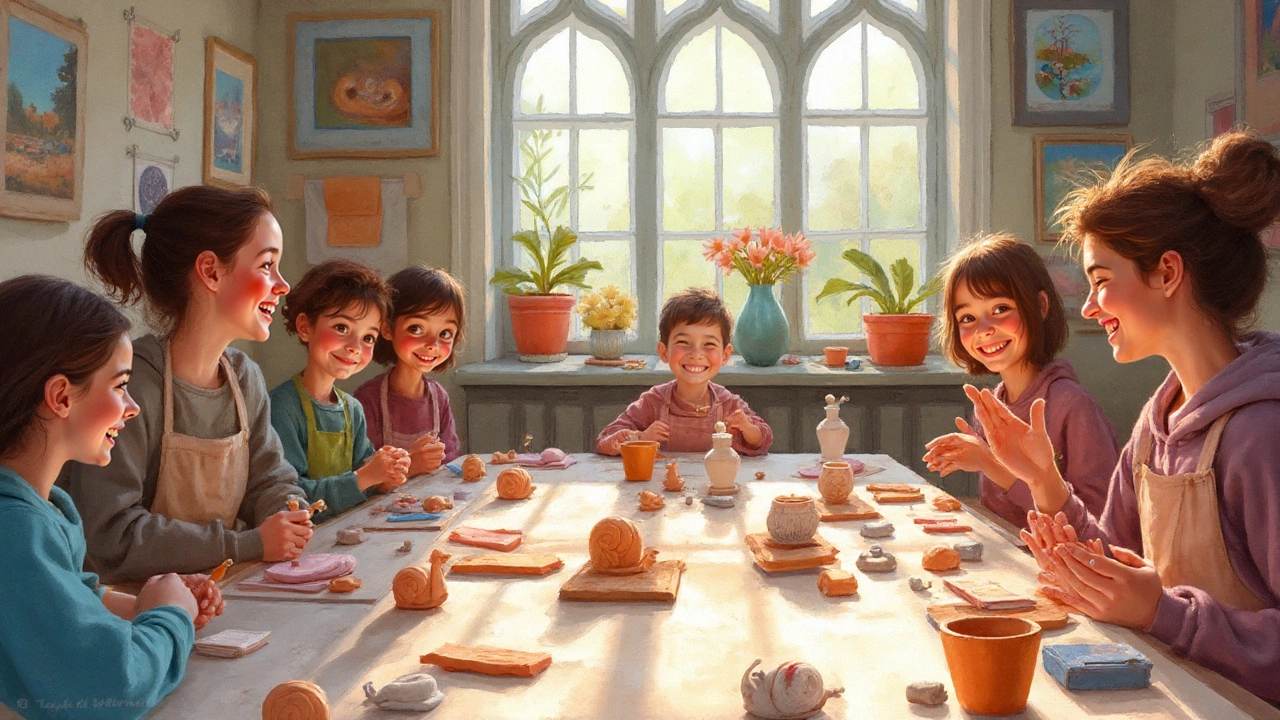Ever notice how little kids can turn playdough into something that actually looks like a dog, a cupcake, or an alien in about five minutes? There’s something magical about taking a lump of nothing and making it into something recognizable. You don’t need years of art school or hands caked with dried clay to start sculpting. So, what’s actually the easiest thing you can sculpt? The answer is less about some official list and more about materials, shapes, and what makes a project fun instead of frustrating.
Why Simplicity Matters When You're Starting to Sculpt
Tackling sculpture for the first time can be weirdly intimidating. There’s always that little voice whispering, “What if this ends up looking like a potato?” That’s why making simple shapes is the best way in. Even those famous Venus figurines from the Stone Age—curvy, basic, and with almost no detail—are proof that you don’t need to copy Michelangelo to create sculpture worth looking at. Simple things like spheres, cubes, or a softly grinning face aren’t just easier to sculpt—they’re how all artists, even the masters, start. People don’t usually talk about this, but the world’s most expensive sculpture, Alberto Giacometti’s “Pointing Man,” basically looks like a stick figure worth over $140 million. Simplicity can surprise you.
Why do easy projects matter? First, you learn about the material without the stress of fancy details. Second, sculpting basic shapes helps your hands “get” the stuff—like how soft clay responds to pressure or how soap carves under a knife. And you need this muscle memory when you’re ready to tackle that portrait of your cat. Try it with a ball, a pinch pot, or a coil. If it flops, who cares? That risk-free attitude is gold, because every mistake (they’ll happen) just means you’re getting bolder. Most museums have ancient, simple animal carvings and little figurines as their oldest treasures. Our ancestors were onto something: easy doesn’t mean boring.
The Easiest Materials for Beginner Sculptors
Not all sculpting materials are created equal. Pick the wrong one and you might spend two hours breaking knives on a bar of soap, like I once did in high school. For most people, the hands-down easiest material is air-dry clay. You can find it at every craft store, drugstore, or even some dollar shops now. It doesn't need an oven or a kiln—just your hands and a couple of everyday tools like toothpicks and butter knives. It’s soft, forgiving, and if you add a little water, you can smooth out any weird lumps or cracks.
Modeling clay (the non-hardening kind kids use) is another fun option. The color choices make for poppy, playful pieces. It can get sticky if left somewhere warm, but the upside is, you can mess up as much as you want. If you prefer something natural, try soap. Honestly, a sharp plastic knife or a popsicle stick can do wonders. And bar soap carves smoothly, plus it smells nice. Don’t overlook aluminum foil—you can squash and smoosh it into quick shapes, then layer tape or clay over it if you’re feeling brave later. Plaster of Paris is also an option, but it gets a bit messier and needs more prep, so keep it as a ‘level up’ goal.
Polymer clay is super popular now but needs baking, so maybe save it for when you’re ready to go pro. Same thing with wood and stone carving: beautiful, rewarding, but let’s not risk carving off your thumb before you graduate from cubes and blobs. By the way, fun fact—in a 2023 survey of 500 art teachers, over 70% recommended starting with air-dry or modeling clay for under-fifteens because the learning curve is low and the satisfaction is high.
| Material | Difficulty | Pros | Cons |
|---|---|---|---|
| Air-Dry Clay | Super Easy | No baking needed, mixes with water, forgiving | Cracks if dried too fast, not waterproof |
| Modeling Clay | Very Easy | Reusable, bright colors, safe for kids | Doesn't set permanently |
| Soap | Easy | Cheap, accessible, smooth cutting | Fragile, can break if too thin |
| Aluminum Foil | Easy | Quick shaping, good for armatures | Not pretty on its own |
| Plaster | Moderate | Detail, cheap, can be painted | Messy, sets quickly, tricky for beginners |

Simple Sculpture Ideas Anyone Can Try
So what’s actually the easiest thing to sculpt? It’s all about picking projects with few steps and little chance of failure. Let’s talk ideas that have been tried, tested, and enjoyed by people brand-new to sculpture.
- Pinch Pots: You just squish a ball of clay into a bowl shape using your thumbs. No fancy tools. Great for holding coins or earrings, too.
- Coil Animals: Roll clay into little snakes and spiral them into a snail. Flatten one end and you’ve got a worm or caterpillar. Go wild—make a dragon if you feel risky.
- Basic Faces and Heads: Start with a ball, squish in eyes with your finger, and poke two holes for a nose and mouth. It might look goofy and that’s half the fun.
- Soap Flowers: Seriously, grab a soap bar and use the tip of a kitchen knife to make simple petals. If you make a mess, just start again—they’re cheap and forgiving.
- Abstract Blobs: Just shape the clay into whatever feels right. Artists like Henry Moore did this and it’s why museums still show those pieces. You literally can’t mess it up.
- Leaf Prints: Press a real leaf into clay and peel it off—voilà, instant texture. People use these as hanging ornaments or just decorations for plant pots.
For those who need more structure, YouTube is crammed with tutorials for “easy sculptures” that walk you through every step, for free. A little secret: Some of the most-shared beginner projects online in 2024 were tiny animal sculptures—a cat curled up, a little bear, and even slugs. These quirky pieces are easy to shape and hard to screw up, so they’re internet favorites for a reason.
Tips to Make Sculpting Easy and Fun
First up: keep your hands—and your tools—clean. Sticky hands equal frustration, and a toothpick works wonders for little details. Starting with small, palm-sized pieces keeps things manageable; a huge blob can fall apart and dent your confidence.
Don’t expect your first (or fifth) sculpture to be flawless. The best part about working with clay and similar materials is that you can squash it and start all over, as many times as you want. Go for soft, easy-to-mold clays if your hands tire easily or you’re working with younger kids. And there’s no shame in tracing simple shapes with cookie cutters. In fact, lots of professional ceramicists use templates to keep things simple, so you’re in good company.
Keep water nearby to smooth out cracks, but don’t flood the clay—it’ll go slimy. If your finished piece feels wobbly, let it dry slowly, out of the sun, to prevent cracking. Most importantly, quit comparing your work to stuff you see online. A beginner’s sculpture is supposed to look, well, like a beginner’s work. The most fun comes from showing off your wonky creation and watching it improve with every new go.
Something not a lot of folks realize: Sculpting is secretly good for mental health. A 2021 study by the American Art Therapy Association showed that doing crafts like sculpture reduced anxiety by up to 45% in test groups. It gets your hands moving, pulls your mind away from stress, and when you finally finish a piece—even if it’s lumpy—it feels like a mini miracle.

Growing From Easy Sculptures to More Complex Creations
Once you’re comfortable making simple forms—maybe your pinch pot collection is stacking up or you’ve handed out little animals to family—you’ll want a challenge. That’s where you can start combining shapes. For example, make a head and a body separately, then attach them by blending clay at the neck. Or try forming standing figures with an aluminum foil “skeleton” underneath for strength.
Learning how to attach parts so they don’t fall apart is one of the first real “skills” you’ll pick up. Google “score and slip” if you want to sound smart at your local pottery meet-up. The idea is just roughing up both surfaces, adding a bit of wet clay (the slip), and sticking them together. Suddenly, your sculptures can have arms, ears, tails, or whatever wild ideas you sketch up. And if you want to get a bit fancy, look up textured tools—many are just household items like old toothbrushes, bottle caps, or even lace from your laundry basket.
The journey from your first squishy cup to recognizable animals, faces, or even abstract shapes is a wild ride. Some people stick with the easy stuff because it stays satisfying and calming. Others outgrow simple projects and start trying bigger, more ambitious things like small busts or miniature buildings. There’s no “right” path—just keep making. As of 2025, hobby stores everywhere offer easy starter kits for everything from animal figurines to holiday ornaments. So the gentlest place to begin, and the easiest thing to sculpt, really is anything small, simple, and familiar—made from soft, forgiving material. Trust your hands, keep it loose, and remember: every sculptor who ever made something jaw-dropping started with a lumpy first attempt. That’s the fun of it.

